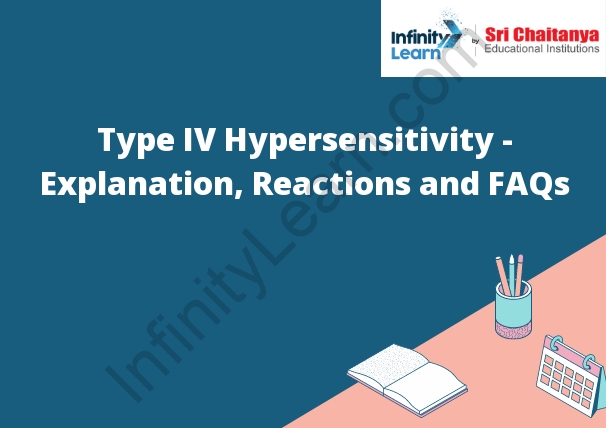Table of Contents
Hypersensitivity Reactions :
A hypersensitivity reaction is an exaggerated immune response to a foreign substance. The body’s immune system mistakenly identifies a harmless substance as a threat and produces antibodies to fight it. This can lead to a range of symptoms, including a rash, hives, itching, swelling, trouble breathing, and a drop in blood pressure. Type IV Hypersensitivity – Explanation Reactions and FAQs.
Hypersensitivity reactions can be caused by a variety of things, including medications, insect stings, and foods. Some people are more susceptible to hypersensitivity reactions than others and may need to take special precautions to avoid them.

Type IV Hypersensitivity/T Cell-Mediated Hypersensitivity :
Type IV hypersensitivity, also called T cell-mediated hypersensitivity, is a type of immune response that occurs when T cells mistakenly attack healthy cells. The T cells mistake the healthy cells for invaders and launch an attack against them. This can lead to inflammation and tissue damage.
The type IV hypersensitivity response is different from the other types of hypersensitivity reactions, which are all caused by antibodies. The type IV hypersensitivity response is mediated by T cells, which are a type of white blood cell.
The symptoms of a type IV hypersensitivity reaction depend on which organs are affected by the attack. The most common symptoms are inflammation and tissue damage. The inflammation can cause pain, swelling, redness, and warmth. The tissue damage can lead to lesions, ulcers, and even death of the cells.
Type IV hypersensitivity reactions can occur anywhere in the body, but they are most common in the skin, lungs, and gut. The skin is often the first place where the reaction occurs, and it can cause a rash or hives. The lungs can become inflamed and cause difficulty breathing. And the gut can become inflamed and cause diarrhea and vomiting.
Type IV hypersensitivity reactions can be treated with medications such as corticosteroids and immunosuppressants.
Type 4 Hypersensitivity Reaction Leads to –
A type 4 hypersensitivity reaction, also known as a delayed hypersensitivity reaction, is a specific type of immune response that occurs when a person’s immune system mistakenly identifies a substance as harmful.
The body’s immune system produces antibodies to fight the perceived threat. These antibodies attach to the substance, which then triggers a series of events that leads to inflammation.
This type of reaction typically occurs hours, or even days, after exposure to the substance. Symptoms can include redness, swelling, pain, and itching.
Type 4 Hypersensitivity Due to Cytotoxic T Cell :
Type 4 hypersensitivity is a specific type of immunologic reaction that occurs when cytotoxic T cells recognize and destroy foreign molecules or cells. This reaction is initiated when the T cells bind to the antigen on the surface of the foreign molecule or cell. The cytotoxic T cells then release cytotoxins, which destroy the foreign molecule or cell. This reaction can cause extensive damage to the tissues and organs of the body.
Type IV Hypersensitivity – Explanation Reactions and FAQs.







